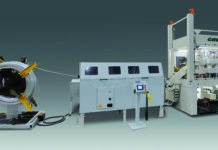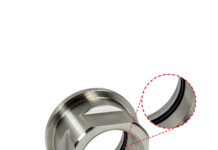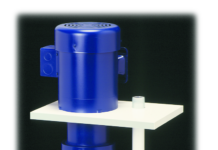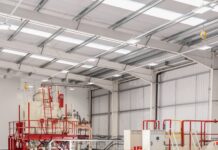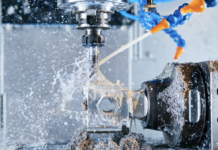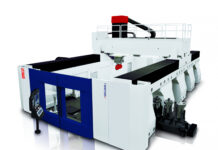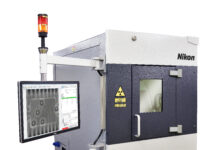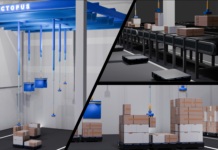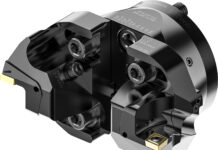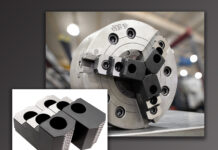
According to the definition given by the U.S. Environmental Protection Agency (EPA), sustainable manufacturing is “the creation of manufactured products through economically-sound processes that minimize negative environmental impacts while conserving energy and natural resources.” It also enhances employee, community, and product safety. The EPA says that an increasing number of manufacturers are realizing substantial financial and environmental benefits from sustainable business practices.
But how sustainable is it really, why is it necessary, and how practical is it for small-to-medium size manufacturers?
Why Sustainable Manufacturing Is Important
When we talk about environmental impacts, we are referring to several resources, such as energy, material, solids, air, and water. According to the U.S. Energy Information Administration’s International Energy Outlook 2019, the manufacturing sector consumes around 40% of global energy. This is more than 80% of the world’s industrial energy use, making it the largest energy consumer within the sector.
More specifically, machining processes such as turning, grinding, milling, and reaming contribute to a significant fraction of this energy use. Machining has a large environmental footprint due to energy and resource use since it involves the process of removing or cutting away material. Turning, the removal process of material from a rotating/cylindrical workpiece is the most prevalently used and significant machining technique. It uses a considerably larger amount of energy than other machining operations.
According to Nabil Nasr, associate provost and director of the Golisano Institute for Sustainability at Rochester Institute of Technology and CEO of the Remade Institute, experts say that if we continue along the path we’re on, greenhouse gas emission will likely increase by 43% by 2060. But by implementing effective sustainability measures across the globe, we could reduce greenhouse gas emissions by a significant percentage, possibly as much as 90%.
Benefits of Sustainable Manufacturing for Small-to-Medium Size Manufacturers and Others
While it may have started with big business, sustainable manufacturing has evolved to include benefits for newer manufacturers, start-ups, and other small-to-medium size companies. These often have more flexible business models and they may rely less on long-established methods or ways of doing things. This allows for opportunities to innovate and change quickly when it comes to sustainable practices.
In fact, a growing number of companies are treating sustainability as an important objective in their strategy and operations to increase growth and global competitiveness, according to the EPA. Companies engaged in sustainability efforts include those of all sizes, ages, and sectors. In many cases, their efforts are having significant results, and they are seeing key benefits such as:
- Increasing operational efficiency by reducing costs and waste
- Responding to or reaching new customers and increasing competitive advantage
- Protecting and strengthening sales as well as brand and reputation
- Building public trust
- Building long-term business viability and success
- Responding to regulatory constraints and opportunities
- Lowering resource and production costs
- Lowering regulatory compliance costs
- Increasing access to financing and capital
- Finding it easier to hire and retain employees
- Disadvantages of Sustainable Manufacturing
One of the biggest considerations that can be difficult, especially for small-to-medium size manufacturers, is the transition to achieve more sustainability. While it should ultimately save the business money, it can cost a significant amount in the short term. The transition typically requires not only the implementation of new manufacturing processes, but also the ability to design and build the technology and machinery needed to support the new sustainable practices. However, in some areas, there may be tax benefits available that can help offset the costs of the transition.
The switch to sustainability can also lead to higher costs in the production process or elsewhere in the facility. A manufacturer who changes suppliers to buy only sustainably made products will likely have to pay a premium price. The higher costs must be passed on to customers or it will mean a smaller profit margin for the manufacturier.
The Way Forward for Sustainable Manufacturing Methods
The EPA says there are several ways in which companies can progress further on the path to sustainability:
- Address sustainability in a coordinated, integrated and formal manner, rather than in an ad hoc, unconnected, and informal manner
- Focus on increased competitiveness and revenues rather than primarily focusing on cost-cutting, risk reduction, and improved efficiency
- Use innovation, scenario planning, and strategic analysis to go beyond compliance
- Integrate sustainability across business functions
- Focus more on the long term
- Work collaboratively with external stakeholders
While Nasr has seen instances where the indicators were there and businesses identified approaches to increase sustainability, manufacturers don’t always follow through with the plans. But because there’s been so much progress in learning about the right path forward, he continues to be optimistic about moving in the right direction for sustainability.
Author
Lori Culpepper
Sources:
- https://www.epa.gov/sustainability/sustainable-manufacturing
- https://www.eia.gov/outlooks/ieo/pdf/ieo2019.pdf
- https://theconversation.com/how-sustainable-manufacturing-could-help-reduce-the-environmental-impact-of-industry-185672
- https://www.oecd.org/innovation/green/toolkit/aboutsustainablemanufacturingandthetoolkit.htm
- https://smallbusiness.chron.com/advantages-disadvantages-green-manufacturing-businesses-22312.html


